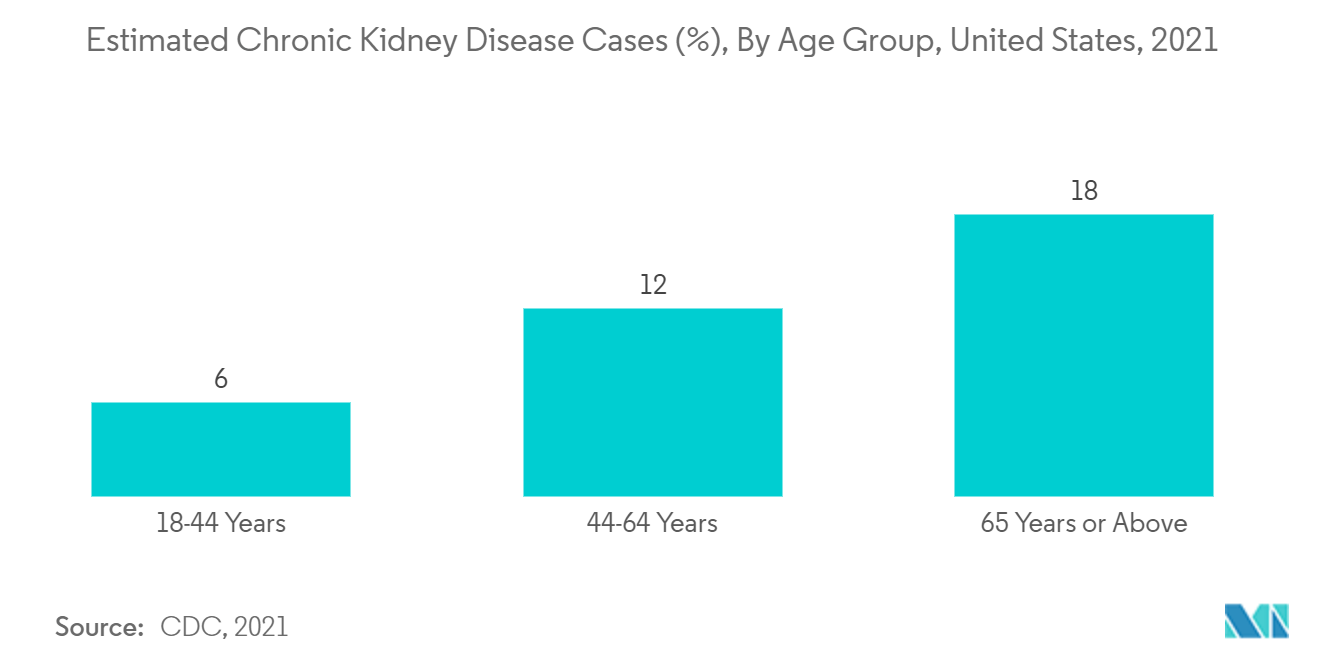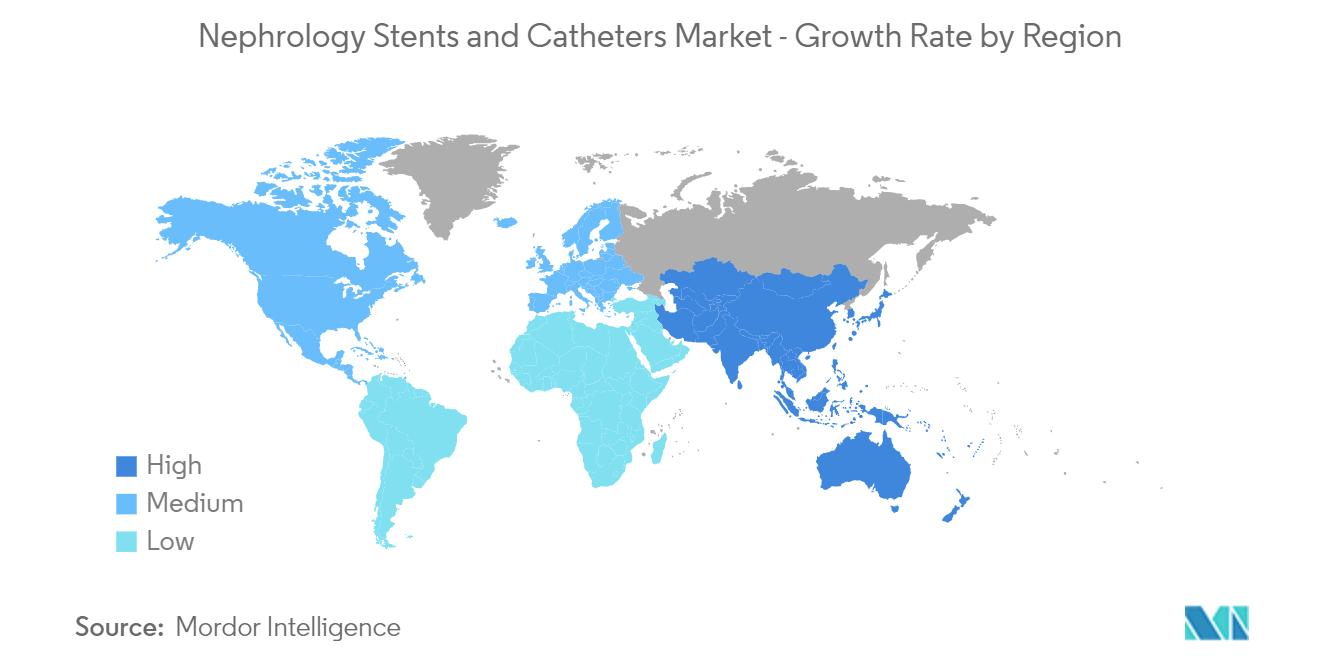Market Trends of Nephrology Stents And Catheters Industry
Balloon Catheters Segment is Expected to Witness Considerable Growth Over the Forecast Period
Balloon catheters are used in many minimally invasive diagnostic and therapeutic procedures, including dilating vessels, opening blockages, delivering stents, and more. The balloon catheter dilates the musculofascial tract and renal capsule, establishing a nephrostomy tract during a percutaneous procedure.
The advantages of the balloon catheter and increasing chronic kidney disease cases are the segment's major drivers. For instance, as per the 2022 statistics published by CDC, the prevalence of CKD is higher in people aged 65 years or older than in people aged between 45-64 years or 18-44 years. Similarly, according to the 2022 statistics published by UNPF, about 24.0% and 19.0% of people in Italy and Canada are aged 65 years or above, respectively. This is anticipated to increase the risk of these populations developing CKD. Hence augmenting the segment growth.
Furthermore, the rising government initiative for spreading awareness regarding CKD and early diagnosis also contributes to the market growth. For instance, the CDC Chronic Kidney Disease (CKD) Initiative focuses on a comprehensive public health strategy involving other public health agencies and national organizations to address CKD. This program supports activities such as disease surveillance, assists in increasing knowledge of CKD and its complications, encourages early detection and treatment, and enhances the quality of life for those with CKD. Similarly, the Kidney Failure Probability Equation (KFRE) is a simple and extensively used method for predicting kidney failure risk among CKD patients. In addition, innovative product launches by the key players are also propelling market growth. For instance, in March 2022, Nipro Medical Corporation (Nipro) launched a second-generation Cronus HP PTA Balloon Catheter in the United States. Cronus HP enables easy repair and restoration of arteriovenous fistulas and is considered the treatment gateway for hemodialysis patients. Thus, increasing cases of chronic kidney diseases and favorable initiatives across the globe are the major drivers for the segment.

North America Region is Expected to Witness Significant Growth Over the Forecast Period
North America is expected to witness a significant market share in the chronic kidney diseases market over the forecast period. The major factors driving the market growth are the rising prevalence of chronic kidney diseases, the presence of well-established healthcare infrastructure along with high health spending, and technologically advanced diagnostic tests. The increasing burden of chronic kidney diseases among the population is the key factor driving the market growth. For instance, per the report published by the American Kidney Fund in February 2022, an estimated 37.0 million Americans have kidney disease, and 92,000 are on the kidney transplant waiting list (as of February 2022). Thus, owing to increasing cases of diseases in the North American region, considerable market growth is expected over the forecast period.
Key product launches, high concentration of market players or manufacturer's presence, acquisition & partnerships among major players, increasing prevalence of diseases, and well-established healthcare expenditure in the United States are some of the factors driving the growth of the country's nephrology stents and catheters market. For instance, per the 2022 statistics published by the American Cancer Society, about 79,000 new cases of kidney cancer (50,290 in men and 28,710 in women) are expected to be diagnosed in the United States in 2022. As per the same source, the lifetime risk of developing kidney cancer is higher in men (2.02%) than in women (1.03%). Similarly, according to the OECD, in June 2022, United States healthcare spending in 2021 was 17.8% of the country's total GDP. In addition, as per the CMS, the National Health Expenditure (NHE) is projected to grow at an average of 5.1% over 2021-2030 and to reach USD 6.8 trillion by 2030. As NHE is projected to grow 1.1% points faster than gross domestic product per year on average over 2021-2030, the health share of the economy is projected to rise by 19.6% in 2030. Thus, such instances are expected to propel the market growth in the country over the forecast period.


